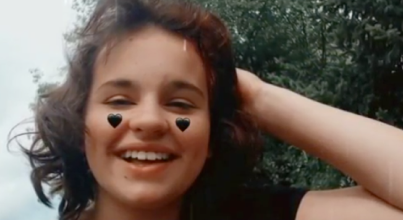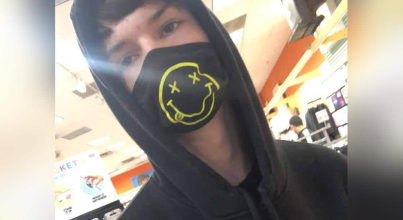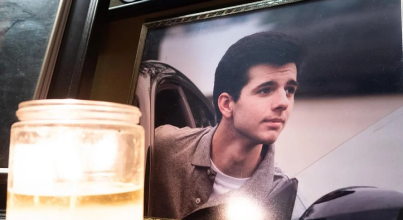Snapchat Lawsuit
The social media platform Snapchat is wildly popular with youth, but its addictive algorithm and inherently harmful features have led to serious mental health problems and suicide among children and teens. Parents have filed Snapchat lawsuits accusing the company of failing to warn users about the dangers of its product, defective design, and gender discrimination, among other complaints.
 Written and edited by our team of expert legal content writers and reviewed and approved by Attorney Matthew Bergman
Written and edited by our team of expert legal content writers and reviewed and approved by Attorney Matthew Bergman
- Content last updated on:
- October 2, 2025
Written and edited by our team of expert legal content writers and reviewed and approved by

- Content last updated on:
- October 2, 2025
Our lawyers are experts in lawsuits against Snapchat to hold them legally accountable for the harm their platform has caused children and teens. We have filed hundreds of lawsuits on behalf of victims and will continue to do so until things are made right. Call us today at (206) 741-4862 for a free case evaluation.
Stories of Children and Teens Harmed by Their Addiction to Snapchat
Children and teens all over the world are experiencing negative mental and physical results of overuse and addiction to Snapchat. Often, these children suffer from severe depression and anxiety, and some have even turned to self-harm, suicidal ideation, and even taking their own lives. Here are the stories of Selena Rodriquez, M.K., Liam Birchfield, and CJ Dawley. Their lives, as well as their families, were impacted forever.

Rodriguez vs. Meta Platforms Inc. et al
Selena Rodriguez became addicted to Snapchat and Instagram at the age of nine. By the time she reached 11, Selena was sleep-deprived due to her compulsion to check notifications at all hours of the day and night. She regularly interacted with men and sent them explicit selfies, which were publicly shared, resulting in bullying at school.
Selena developed eating disorders, low self-esteem, and severe depression. Despite multiple psychiatric hospitalizations, outpatient therapy, and attempts by her mother to remove access to social media, Selena’s addiction to the platform ultimately led to her suicide on July 21, 2021.

Doffing vs. Meta Platforms Inc. and Snap Inc.
Brittney Doffing and her minor daughter M.K. are suing Meta and Snap Inc. for the negative impacts the platforms have had on her mental health. M.K. received a phone compatible with social media apps for the first time on her 14th birthday in March 2020. She immediately installed Instagram and Snapchat and became addicted within two weeks.
She became sleep-deprived, and her academic performance suffered markedly. M.K. received sexually explicit communications from adult male sexual predators and became obsessed with her body image, which resulted in the development of an eating disorder.
Brittney Doffing attempted to intervene by confiscating her daughter’s phone, but this only resulted in M.K. running away in an attempt to access social media by another means. M.K. was hospitalized twice as a result of psychiatric episodes related to her addiction.

Heffner vs. Meta Platforms Inc. and Snap Inc.
Ashleigh Heffner’s 17-year-old son Liam Birchfield started using social media in middle school. He enjoyed playing his guitar and planned to join the United States Air Force after high school. Tragically, he became addicted to Snapchat and Instagram, and this led directly to his suicide by gunshot on July 6, 2021.
Liam stayed up until the early-morning hours every night, scrolling through endless feeds and communicating with strangers. The material he viewed included information about firearms. He developed depression, experienced suicidal thoughts, and engaged in self-harm leading up to his suicide.

Dawley vs. Meta Platforms Inc. and Snap Inc.
Christopher James “CJ” Dawley was an active honor student, athlete, and outdoorsman. At approximately 15 years old, he began using Facebook, Instagram, and Snapchat. He exchanged explicit photographs and became obsessed with his body image. He became sleep-deprived as he communicated on social media throughout the day and night.
He showed no outward signs of depression or mental injury. On January 4, 2015, at the age of 17, CJ fatally shot himself and left his parents a suicide note to assure them it was not their fault. The parents were unaware of the harmful aspects of social media until Facebook Whistleblower Frances Haugen testified to Congress in October 2021.
Snapchat Fentanyl Lawsuit
In addition to overuse and exposure to harmful content, Snapchat has become the preferred platform for drug dealers to conduct business. A combination of the lack of oversight by Snap inc. and the app’s features make it easy for drug dealers to erase any evidence of communication with individuals over the app, allowing them to avoid responsibility when things go wrong. The Federal Bureau of Investigation is currently examining Snapchats role in the poisoning deaths of teens exposed to lethal doses of fentanyl after purchasing prescription drugs from dealers they were connected to over the platform. We have filed a separate fentanyl lawsuit against Snap Inc. to represent victims and their families.
Utah Sues Snapchat Over Allegedly Misleading AI Use and Safety Risks for Minors
Utah officials have filed a lawsuit against Snap Inc., accusing the company of utilizing deceptive and harmful design features in the social media app “Snapchat” to addict children and facilitate drug sales, among other concerns.
Filed in late June 2025, the lawsuit alleges that Snap has misled parents and users for years by promoting the app as safe while exposing minors to sexual content, predators, and drug dealers.
Utah officials allege that the app’s emphasis on user safety is misleading, criticizing the launch of a virtual chatbot, “My AI,” without proper testing or adequate safety measures. The chatbot has been accused of advising underage users on concealing alcohol and marijuana use, as well as tips for sexual encounters with adults. The lawsuit claims the app company violated the Utah Consumer Privacy Act by improperly collecting user data, with the state seeking penalties and reforms for alleged violations of Utah’s Consumer Privacy and Sales Practices Acts through misleading practices.
How does Snapchat place teens and tweens at risk?
Snapchat takes advantage of the underdeveloped brain chemistry present in teens and manipulates the brain reward system to keep users on their platform. It directs them to harmful content and employs features that decrease parents’ ability to monitor their activities on the platform while making it easier for predators to find them.
Snapchat can be harmful to teens and tweens due to the following features:
Addictive Algorithm
According to the American Psychological Association, changes in children’s brains occur between the ages of 10 and 12 that cause social rewards to feel more satisfying due to a release of dopamine and oxytocin in response to social stimuli.
In essence, social media companies such as Snapchat are profiting from the vulnerabilities of children and teens due to their stages of brain development.
Snapstreaks
A Snapchat interaction occurs when users post images or videos known as “snaps.” When two users send each other snaps for three consecutive days, each is awarded a snapstreak, also known as a streak, which is denoted by a fire emoji and a number that indicates how many days the streak has been active. If either user fails to correspond on a given day, the streak ends.
According to Common Sense Media, streaks compel users to spend time on Snapchat daily due to the following characteristics:
- They correlate to a higher social status as the number and lengths of streaks increase.
- They create feelings of obligation to keep streaks going to avoid disappointing other users.
- They serve as a means to measure friendships.
Teens may become involved in an overwhelming number of streaks that take hours to maintain each day. For some, maintaining streaks becomes the most important task in their lives, creating anxiety and pressure.
Disappearing Messaging
Snapchat offers users the ability to set time limits on snaps so they disappear as soon as they are viewed. This can create the illusion that pictures and videos posted on Snapchat are temporary. This may encourage teens to share content they otherwise would not, such as explicit images or cyberbullying messages.
Vanishing messages prevent parental monitoring and lull users into a false sense of security. Savvy users can easily screenshot images and share them on platforms where they become permanent.
Snap Maps
Snap Maps allow users to share and view each other’s locations. Usually, only friends can see it, but many friends on Snapchat are not people teen users know.
Discover
Discover offers content created by celebrities, promotions, news, and ads, but it can contain sexually explicit or outrageous content. Children who sign up with inaccurate birthdays may see ads related to alcohol or other adult topics.
Exposure to Online Predators
There have been numerous accounts of online predators preying on children and teens through Snapchat. Recently, New Mexico has filed a lawsuit alleging that Snapchat failed to protect underage users and instead recommended accounts from complete strangers that groomed victims into sending explicit pictures of themselves over the app.
Holding Snapchat Accountable
According to Matthew Bergman, the founder of SMVLC, Snapchat has a profit model that is based on how many hours they keep children online. As a result, children are not merely stumbling upon harmful information, but Snapchat and other social media platforms are affirmatively directing them to it. This along with the platform’s inherently harmful features makes Snapchat unsafe for kids.

FOUNDING ATTORNEY
“The root of the problem is that companies have decided that they would rather make billions of dollars than make safe products…They can make plenty of money designing a safe product, but they made a deliberate decision to do the bare minimum to keep their high profits, and that’s why we want to hold them accountable in a court of law,” Bergman told 60 Minutes Australia in April 2022.
If your child suffered mental or physical harm as a result of regular or excessive use of Snapchat, contact our firm today for a free case review by calling (206) 741-4862.
Snapchat Lawsuit Case Review
Snapchat has been named in several lawsuits for causing children and teens harm